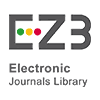Exploring Gender Bias in EFL Classrooms: A Study of Teacher-Student Interactions and Learning Outcomes
Abstract
Gender bias in teacher-student interactions remains a pervasive issue within educational research, influencing students' academic participation, engagement, and performance in subtle yet profound ways. The present study investigates gender bias in teacher-student interactions within English as a Foreign Language classrooms in Iranian higher education, exploring its impact on learning outcomes. Adopting a constructionist perspective, the study posits that classroom behaviors are socially constructed and influenced by societal norms. Findings revealed significant gender disparities: male students were called on more frequently received more positive feedback, and were more often assigned leadership roles. Female students reported lower confidence and motivation, attributing this to perceived bias in teacher interactions. Both students and teachers identified strategies to mitigate bias, such as equal participation opportunities and teacher training. The study underscores the pervasive nature of gender bias in EFL classrooms and its detrimental effects on female students' academic engagement and outcomes, calling for targeted interventions to foster equity.
Keywords
Full Text:
PDFReferences
Aicha, A. (2017). Gender bias in EFL classroom.
Alannisa, N. A Gender Study: Female Teachers' Interaction to Male and Female Students in EFL Classroom (A Descriptive Study at LB LIA Pamulang). Jakarta: FITK UIN Syarif Hidayatullah Jakarta.
Brodin, A. (2017). Gender bias and teachers in the EFL classroom in 4-6: Malmö högskola/Lärande och samhälle.
Brophy, J. E., & Good, T. L. (1974). Teacher-student relationships: Causes and consequences: Holt, Rinehart & Winston.
Calvanese, M. M. (2007). Investigating gender stereotypes in elementary education.
Chaa, F., & Moulayat, M. (2021). Teachers’ Gender Awareness on Students’ Classroom Interaction. Université Ibn Khaldoun-Tiaret-.
Dabiri, E. (2006). Baresi-Pravesh-e Alasdair-e Amuzegar bar Paye-ye Jensiat-e Daneshamazon [Investigating Teacher’s Classroom Management Based on Students’ Gender]. Modern Educational Notions, 2, 43-69.
De Beauvoir, S. (1994). The second gender. London: Campbell.
De Beauvoir, S. (2005). The second gender: Translated by Ghasem Sanawi. The second.
De Beauvoir, S. (2023). The second sex Social theory re-wired (pp. 346-354): Routledge.
Duffy, J., Warren, K., & Walsh, M. (2001). Classroom interactions: Gender of teacher, gender of student, and classroom subject. Sex roles, 45, 579-593.
Durán, N. C. (2006). Exploring gender differences in the EFL classroom. Colombian Applied Linguistics Journal(8), 123-136.
Fabes, R. A., Pahlke, E., Martin, C. L., & Hanish, L. D. (2013). Gender-segregated schooling and gender stereotyping. Educational Studies, 39(3), 315-319.
Fukada, H., Fukada, S., & Hicks, J. (1993). Stereotypical attitudes toward gender-based grade-level assignment of Japanese elementary school teachers. The Journal of psychology, 127(3), 345-351.
Good, T. L., Sikes, J. N., & Brophy, J. E. (1973). Effects of teacher sex and student sex on classroom interaction. Journal of educational psychology, 65(1), 74.
Hassaskhah, J., & Roshan Zamir, S. (2013). Gendered teacher–student interactions in English language classrooms: A case of Iranian college context. SAGE Open, 3(3), 2158244013502986.
Hoang, T. N. (2008). The effects of grade level, gender, and ethnicity on attitude and learning environment in mathematics in high school. International Electronic Journal of Mathematics Education, 3(1), 47-59.
Ifegbesan, A. (2010). Gender-stereotypes belief and practices in the classroom: The Nigerian post-primary school teachers. Global Journal of Human Social Science, 10(4), 29-38.
Jones, S. M., & Dindia, K. (2004). A meta-analytic perspective on sex equity in the classroom. Review of educational research, 74(4), 443-471.
Kelly, A. (1988). Gender differences in teacher–pupil interactions: a meta-analytic review. Research in education, 39(1), 1-23.
Lee, S. M. (2001). Gender bias in Taiwan's EFL classrooms: a classroom observation study: The University of Mississippi.
Li, J., Wang, C., & Shen, Z. (2024). Gender stereotypes as related to language learning engagement: Mediating roles of motivational beliefs and emotional factors. The Asia-Pacific Education Researcher, 1-12.
López-Sáez, M., Morales, J. F., & Lisbona, A. (2008). Evolution of gender stereotypes in Spain: Traits and roles. The spanish journal of Psychology, 11(2), 609-617.
Marshall, C. S., & Reinhartz, J. (1997). Gender issues in the classroom. The Clearing House: A Journal of Educational Strategies, Issues and Ideas, 70(6), 333-337.
Mehran, G. (2003). Gender and education in Iran. paper commissioned for the EFA Global Monitoring Report, 4.
Norton, B., & Pavlenko, A. (2004). Addressing gender in the ESL/EFL classroom. Tesol Quarterly, 38(3), 504-514.
Pawelczyk, J., Pakuła, Ł., & Sunderland, J. (2014). Issues of power in relation to gender and sexuality in the EFL classroom-An overview. Journal of Gender and Power, 1, 49-66.
Powell, G. N., Butterfield, D. A., & Parent, J. D. (2002). Gender and managerial stereotypes: have the times changed? Journal of management, 28(2), 177-193.
Rashidi, N., & Naderi, S. (2012). The effect of gender on the patterns of classroom interaction. Education, 2(3), 30-36.
Razumnikova, O. (2005). The interaction between gender stereotypes and life values as factors in the choice of profession. Russian Education & Society, 47(12), 21-33.
Riegle-Crumb, C., & Moore, C. (2013). Examining gender inequality in a high school engineering course. American journal of engineering education, 4(1), 7858.
Rosén, J. (2012). Becoming an immigrant in the Sfi-classroom: Intersections of gender and national identity in the langauge learning classroom. Paper presented at the International multidisciplinary workshop Marginalization Processes. 2012, 26-28 April 2012. Örebro University.
Sadker, M., & Sadker, D. (2010). Failing at fairness: How America's schools cheat girls: Simon and Schuster.
Sadker, M. S., & Sadker, D. P. & Klein, S.(1991). The issue of gender in elementary and secondary education. Review of research in education, 269-334.
Scott, J. W. (2015). El género: una categoría útil para el análisis histórico. Género: la construcción cultural de la diferencia sexual.-(Pública-Género; 1), 251-290.
SEBAGH, A. A., & BAAZI, I. (2021). Gender Interaction in Classroom Discourse. Université Ibn Khaldoun-Tiaret-.
Stewart, A. J., & McDermott, C. (2004). Gender in psychology. Annu. Rev. Psychol., 55(1), 519-544.
Streitmatter, J. (1994). Toward gender equity in the classroom: Everyday teachers' beliefs and practices: SUNY Press.
Sunderland, J. (1998). Girls being quiet: a problem for foreign language classrooms? Language teaching research, 2(1), 48-82.
Vu, T. D., Bui, L. P., Vu, P. A., Dang-Van, T., Le, B. N., & Nguyen, N. (2025). Understanding female students’ entrepreneurial intentions: gender inequality perception as a barrier and perceived family support as a moderator. Journal of Entrepreneurship in Emerging Economies, 17(1), 142-163.
West, C., & Zimmerman, D. H. (1987). Doing gender. Gender & society, 1(2), 125-151.
Wilkins, A. (2012). Push and pull in the classroom: Competition, gender and the neoliberal subject. Gender and Education, 24(7), 765-781.
Xiao-Yan, M. (2006). Teacher talk and EFL in university classrooms. Unpublished master’s thesis, Chongqing Normal University & Yangtze Normal University, China, 5-13.
DOI: http://dx.doi.org/10.18415/ijmmu.v12i5.6717
Refbacks
- There are currently no refbacks.
Copyright (c) 2025 International Journal of Multicultural and Multireligious Understanding

This work is licensed under a Creative Commons Attribution-NonCommercial-NoDerivatives 4.0 International License.
https://ijmmu.com
editor@ijmmu.com
facebook.com/ijmmu
Copyright © 2014-2018 IJMMU. All rights reserved.



































